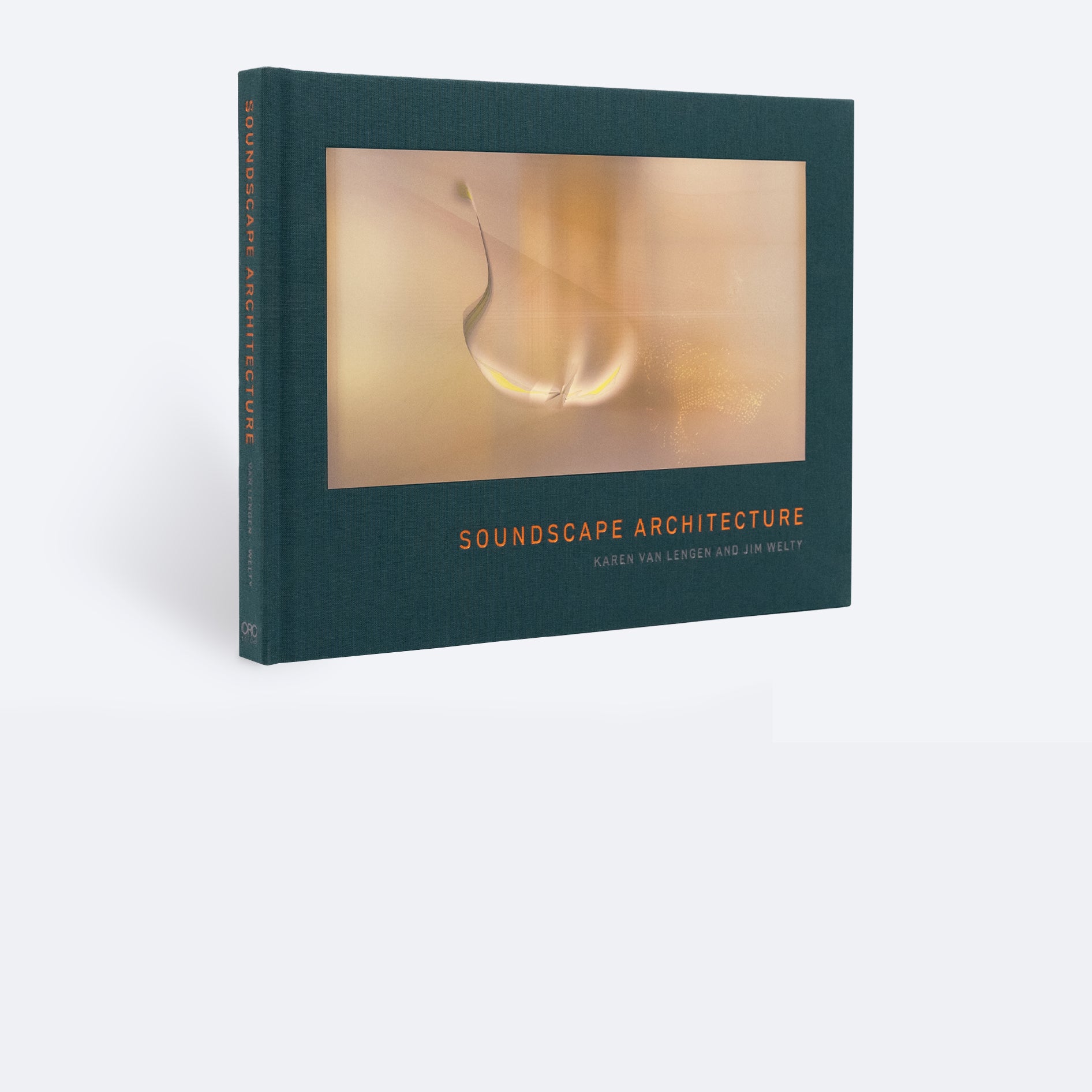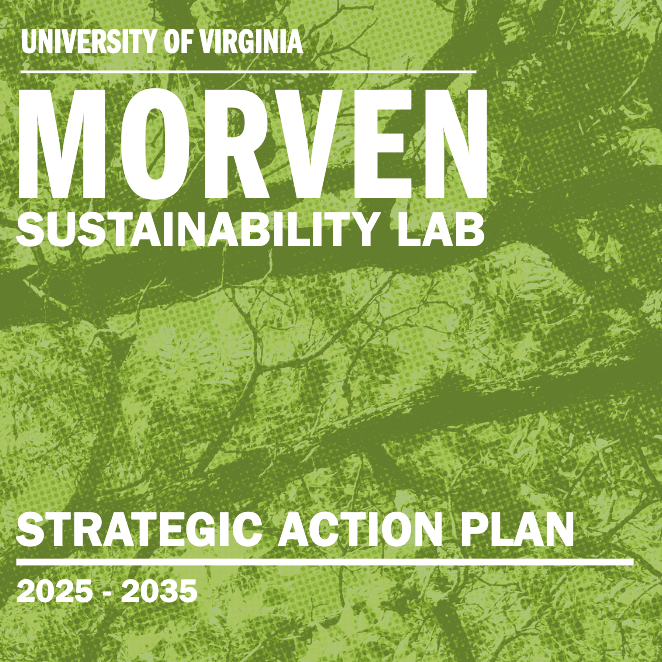
Erin Putalik Co-Authors "Sense of Smog" in LA+ Journal's Sense Issue
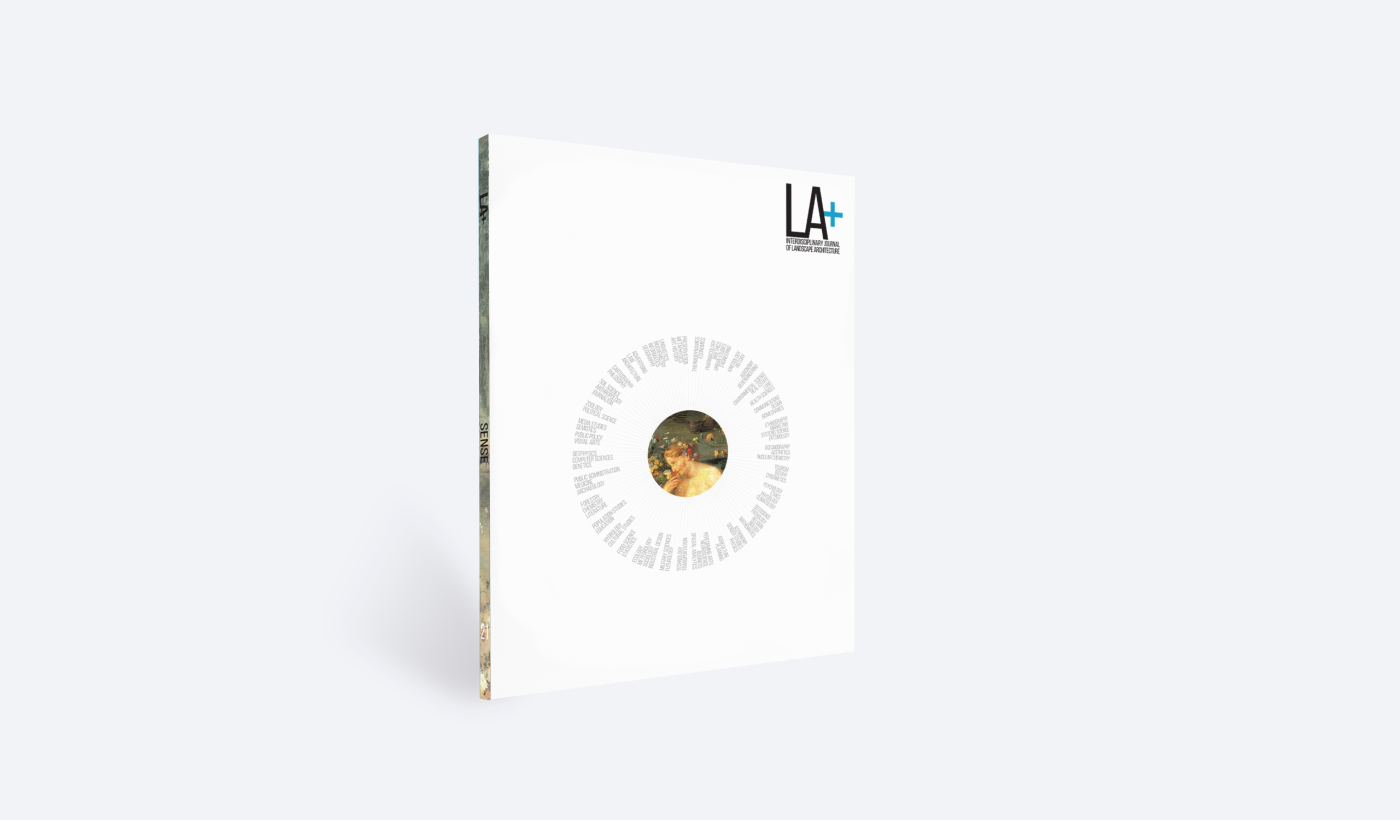
LA+ Interdisciplinary Journal of Landscape Architecture
Issue 21: Sense
Spring 2025
The Spring 2025 issue of LA+ Journal, titled SENSE, explores how we perceive, measure, and make meaning of the world through our senses—natural, augmented, and engineered. As technologies for sensing our environments become increasingly sophisticated, this issue asks timely questions: What counts as “natural” human perception? How have our sensory experiences been standardized, mediated, or mistrusted? Contributors examine topics ranging from surveillance and sensory justice to the perceptual capacities of animals and machines, challenging assumptions about the body, technology, and the built environment.
Among the contributors are University of Virginia faculty Erin Putalik (Architecture + Landscape Architecture) and Sally Pusede (Environmental Sciences) who collaborated on a richly researched essay that reframes the history of smog in Los Angeles as a story not only of chemistry and regulation, but of the human senses.
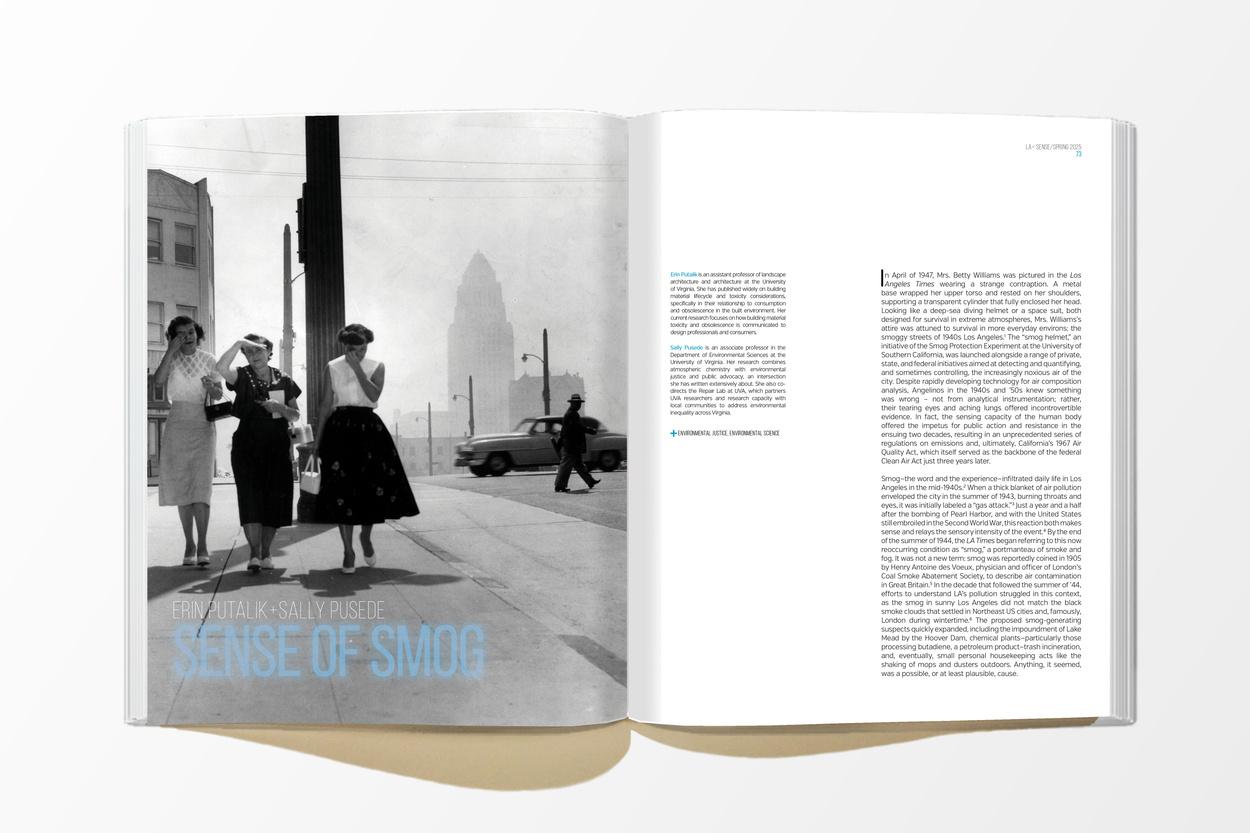
Titled “Sense of Smog,” their essay uncovers how early public awareness and policy responses to L.A.’s mid-century air pollution crisis were rooted in the embodied experiences of Angelenos—tearing eyes, burning lungs, and disappearing views—alongside the rise of mechanical sensors and data charts that standardized the measurement of polluted air. Drawing on archival material, newspaper accounts, and scientific reports, Putalik and Pusede trace the interplay between personal perceptions (and protests) of smog and the emergence of environmental technologies like the Air Pollution Control Board's 1946 "smog smelling" device—an early example of how machines became olfactory proxies for the scientists and politicians tasked with diagnosing public health threats.
The essay revisits a period when smog was framed as a shared civic problem—a kind of atmospheric equalizer that united the city’s population under a thick blanket of pollution. In a 1944 Los Angeles Times article, the city was described by reporter Ray Zeman, as a "vast room with doors and windows closed" for its two million residents breathing the same contaminated air. This metaphor supported early public health messaging and policy, calling on “civic-minded” residents to limit personal driving and participate in collective action. But as Putalik and Pusede note, the illusion of shared burden quickly unraveled. In the decades that followed, freeway construction disproportionately displaced Black, Latinx, Asian, and low-income neighborhoods—communities that continue to bear the brunt of poor air quality due to proximity to major roadways and industrial infrastructure. The democratizing metaphor gave way to a deeper truth: air pollution, like so many environmental harms, is unevenly distributed.
In their piece, Putalik and Pusede underscore the importance of human sensory experience working in dialogue with scientific research to articulate emergent environmental and health issues. “Sense of Smog” cautions against the over-reliance on impersonal data and calls for renewed attention to the body as both sensor and advocate.
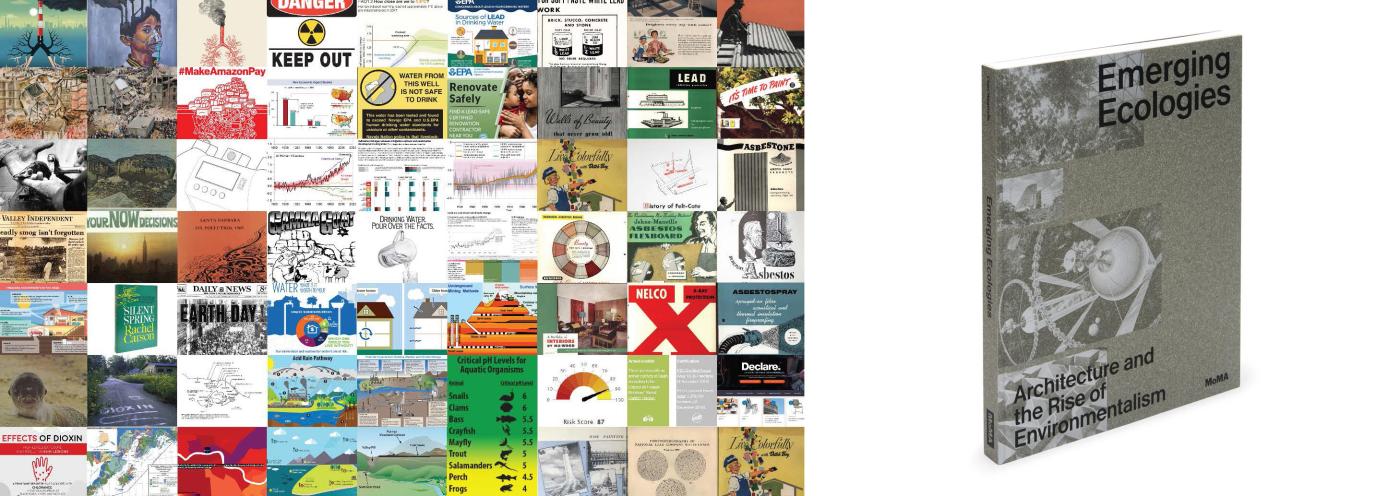
The authors' collaborative writing stems from the multidisciplinary research project Imaging the Invisible, they led with the School of Architecture's Jeana Ripple. Supported by a 3 Cavaliers grant and a team of student researchers, the project investigates how graphic representations of environmental hazards—from air and water to soil and building materials—circulate through scientific, institutional, and public spheres. Their visual archive, which the team plans to turn into a searchable database, includes hundreds of images drawn from government, corporate, media, and social platforms to better understand how environmental risks are translated for public engagement.
Putalik, Pusede, Ripple, and their student team also contributed to the historical timeline featured in the Museum of Modern Art’s exhibition catalog Emerging Ecologies: Architecture and the Rise of Environmentalism (eds. C. Chan and M. Wagstaffe, 2023), which contextualizes key moments in environmental architecture within the broader political and cultural history of the twentieth-century United States. The trio is currently developing their next collaborative project.
...
As a historian, I have found many of my most fruitful collaborations to be with people like Sally [Pusede] — using my interest in archival digging and storytelling to work with people who really know the science deeply, and are invested in its real-world impact.
—Erin Putalik, Assistant Professor of Landscape Architecture and Architecture
|
Image

|
Authors
Erin Putalik is an assistant professor of landscape architecture and architecture at the University of Virginia. She has published widely on building material lifecycle and toxicity considerations, specifically in their relationship to consumption and obsolescence in the built environment. Her current research focuses on how building material toxicity and obsolescence is communicated to design professionals and consumers.
Sally Pusede is an associate professor in the Department of Environmental Sciences at the University of Virginia. Her research combines atmospheric chemistry with environmental justice and public advocacy, an intersection she has written extensively about. She also co-directs the Repair Lab at UVA, which partners UVA researchers and research capacity with local communities to address environmental inequality across Virginia.
Citation
Erin Putalik and Sally Pusede, "Sense of Smog," LA+ Interdisciplinary Journal of Landscape Architecture, no. 21 (2025): 72–79. https://laplusjournal.com/21-SENSE
About LA+
LA+ (Landscape Architecture Plus) Journal is a biannual print journal produced out of the Department of Landscape Architecture at the University of Pennsylvania Stuart Weitzman School of Design and published by ORO Editions. LA+ aims to reveal connections and build collaborations between landscape architecture/urban design and other disciplines by exploring each issue's theme from multiple perspectives.


